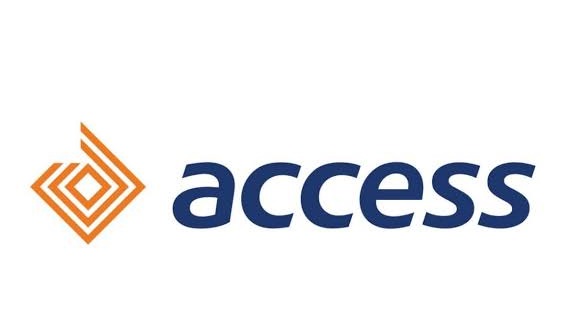- Search for topics or project materials by department. 2015/2016 Research Work 46 ARCHITECTURE 12 Accounting 158 Agriculture & Farming 21 Arts and Crafts 25 BIOCHEMISTRY 30 Bank & Finance 45 Biology 1 Business Administration 162 CHEMICAL ENGINEERING 18 Career People 18 Computer Science 0 Computer Science 244 Computer Science E-books 0 ECONOMICS 117 EDUCATION 78 ELECTRICAL ELECTRONICS 88 ENGLISH 14 ESTATE MANAGEMENT 16 Electrical Electronics 0 Food 19 Forum 0 General Topics 4 HOSPITALITY & TOURISM 123 Import & Export 10 Land Survey & Geoinformatics 68 Law 7 MARKETING 37 Marketing & Advertising 11 Mass communication 155 Masters and Doctorate 118 Mechanical Engineering books 0 Media & Publishing 6 Medical Science E-books 0 Micro Biology 4 Micro Biology 8 OTHERS 0 Oil & Gas 11 Online & Internet 36 POLITICAL SCIENCE 0 Program / Source Code 0 Programming E-books 0 Public Administration 25 Real Estate 20 Religious E-boooks 0 Retail 20 STATISTICS 17 Science Laboratory 0 Science laboratory 56 Sermons & Prophecies Ebook 0 Services 19 Small Scale Manufacturing 21 System Applications 0 Technology 30
THE EFFECTS OF TOTAL QUALITY MANAGEMENT ON PRODUCTIVITY USING THE PROBIT MODEL (A CASE STUDY OF SKYE BANK PLC EDO STATE)
THE EFFECTS OF TOTAL QUALITY MANAGEMENT ON PRODUCTIVITY USING THE PROBIT MODEL A CASE STUDY OF SKYE BANK PLC EDO STATEABSTRACT
The broad objective of this research work is to take a critical look at the principle of total quality management so as to find out how its implementation will affect an organisations productivity and profitability. For the purpose of this study, the researcher limited its data to those of the Skye Bank Plc and her customers. The researcher used survey method to investigate the effects of Total Quality Management on productivity using the probit model: a case study of Skye Bank Plc Edo State.
TABLE OF CONTENTS
Approval Page ii
Certification iii
Dedication iv
Acknowledgement v
Abstract vi
CHAPTER ONE:
INTRODUCTION
1.1 Background of the study 1
1.2 Statement of the problem
1.3 Statement of the objectives
1.4 Research questions
1.5 Hypotheses of the study
1.6 Significance of the study
1.7 Scope of the study
1.8 Limitations of the study
CHAPTER TWO
LITERATURE REVIEW
2.1 Introduction
2.2 Review of relevant literature on T.Q.M
2.2.1 T.Q.M overview
2.2.2 The importance of people in T.Q.M
2.2.3 Quality measurement and business excellence
2.2.4 Quality improvement verses quality assurance
2.2.5 Implementation of principles
2.2.6 Steps in managing the transition
2.2.7 Key improvement concepts
2.2.7.1 Process and systems
2.2.7.2 Customers and suppliers
2.2.7.3 Quality
2.2.7.4 Benchmarking
2.2.7.5 Teams and teamwork
2.2.8 The concept of continuous improvement by T.Q.M
2.2.8.1 Basic principles of T.Q.M
2.2.9 Key element of T.Q.M
2.2.10 Steps to total quality management T.Q.M
2.2.11 The concepts of culture
2.2.12 Applying T.Q.M in T.Q.M in academics
2.2.13 The success of T.Q.M
2.3 Measurement of organizational
CHAPTER THREE
METHODOLOGY
3.1 Research design
3.2 Source of data
3.3 Area of study
3.4 Population of the study 38
3.5 Determination of sample size
3.6 Reliability test
3.7 Validity test
3.8 Techniques for data analysis
CHAPTER FOUR
PRESENTATION OF DATA
4.1 Presentation of data
4.2 Test of hypotheses
4.3 Discussions of findings
CHAPTER FIVE
SUMMARY, CONCLUSION, RECOMMENDATION
5.1 SUMMARY
5.2 CONCLUSION
5.3 RECOMMENDATION
Bibliography
Appendix
View Related Projects
ASSESSING THE IMPACT OF AUDITORS INDEPENDENCE ON INTERNAL CONTROL – A SURVEY OF THREE MANUFACTURING FIRMS IN RIVERS STATE
ABSTRACTThis research study was aimed at critically assessing the statutory auditors independence on internal contr...
Continue readingEFFECTIVENESS OF INVENTORY MANAGEMENT IN A MANUFACTURING COMPANY (A CASE STUDY OF AMA GREENFIELD BREWERIES PLC, ENUGU, NIGERIA)
ABSTRACTThis study examines the essence of effective inventories control and management to manufacturing companies with...
Continue readingTHE IMPACT OF INTERNAL CONTROL SYSTEM ON REVENUE GENERATION: CASE STUDY OF POWER HOLDING COMPANY OF NIGERIA (P.H.C.N) OKPARA AVENUE ENUGU
ABSTRACTThe objective of this study was to evaluate the internal control system in operation at power holding com...
Continue reading

